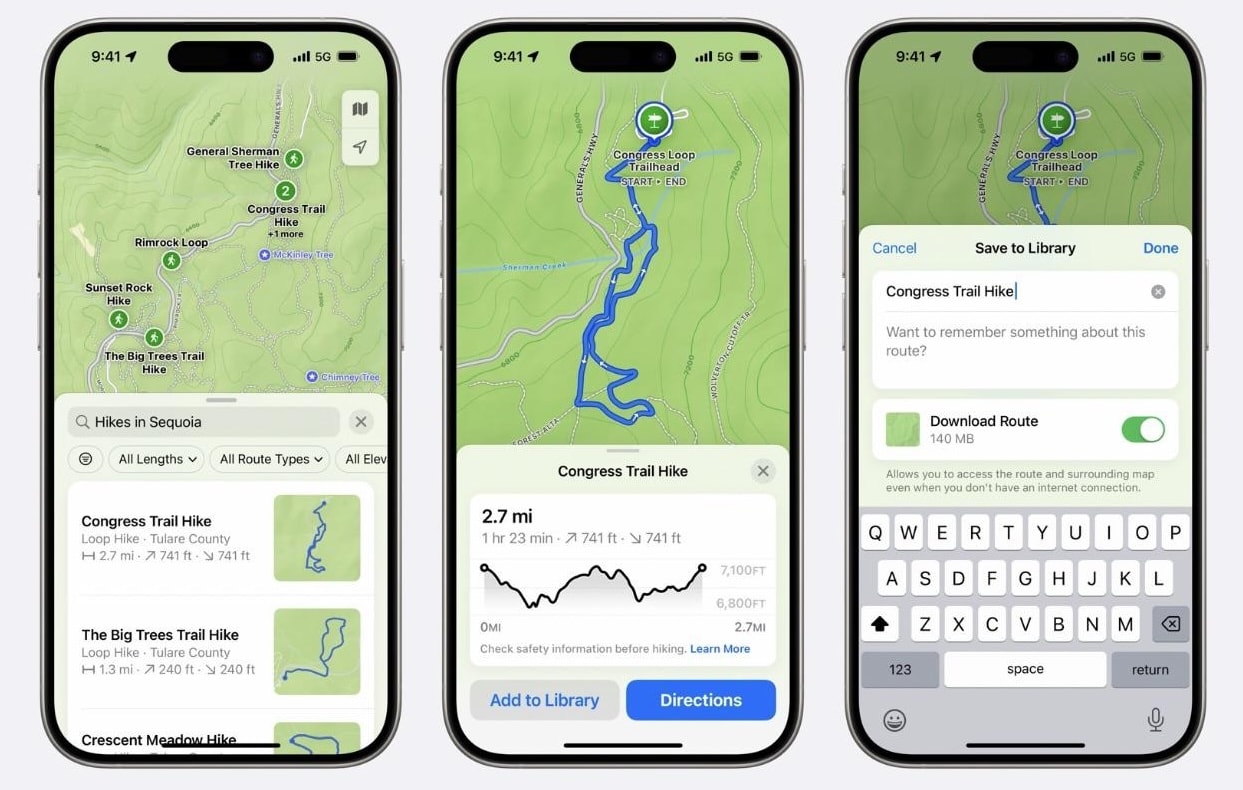Apple is bringing topographic maps to Apple Maps, helping those outdoorsy be more… outdoorsy. The topographic maps will show hills and changes in elevation, highlight trail networks, and allow hiking routes. It’s a great update that pushes Apple Maps beyond the standard navigation software concept, with Apple claiming its application will display trails for 63 national parks in the United States.
Unfortunately, the focus remains on Apple’s home market, so everybody else could find topographic maps rather useless, at least until the company delivers the full experience to non-American users.
The feature lineup includes step-by-step guidance for trail directions, and Apple Maps will also support offline navigation. The application received offline mode support with the release of iOS 17, and now the upcoming OS update will push this feature to a new level. Users who plan a hiking adventure can download maps before they leave their homes, and we all know how important this is, considering that a walk in nature doesn’t guarantee a strong cellular signal.
iOS 18 will debut in the fall, but developers have already received the first beta build, so it won’t be long before we see this new feature at work.
Meanwhile, the competition between Apple Maps and Google Maps is fantastic news for iPhone users. However, Apple still shows no intention of bringing Apple Maps to Android devices, sticking with an approach that significantly limits the app’s audience.
Improving Apple Maps has become Apple’s priority. The demise of the Apple Car pushed the company out of the hardware sector in the automotive space, forcing it to focus on software and services. Apple Maps and CarPlay pioneer Apple’s foray into the car world, and the iPhone maker is now competing directly against Google in this space.
However, Apple sticks with a different approach regarding CarPlay. While Google turned Android Automotive into a stand-alone operating system that can be installed in cars, CarPlay won’t become an OS, with the experience to be powered by an iPhone. This approach allows Apple to keep users tied to its ecosystem, as an iPhone will be required in cars where the new CarPlay version will be available. The first models fitted with CarPlay 2.0 will launch this year, with Porsche and Aston Martin pioneering the adoption of the new experience ahead of more carmakers following in their footsteps.

